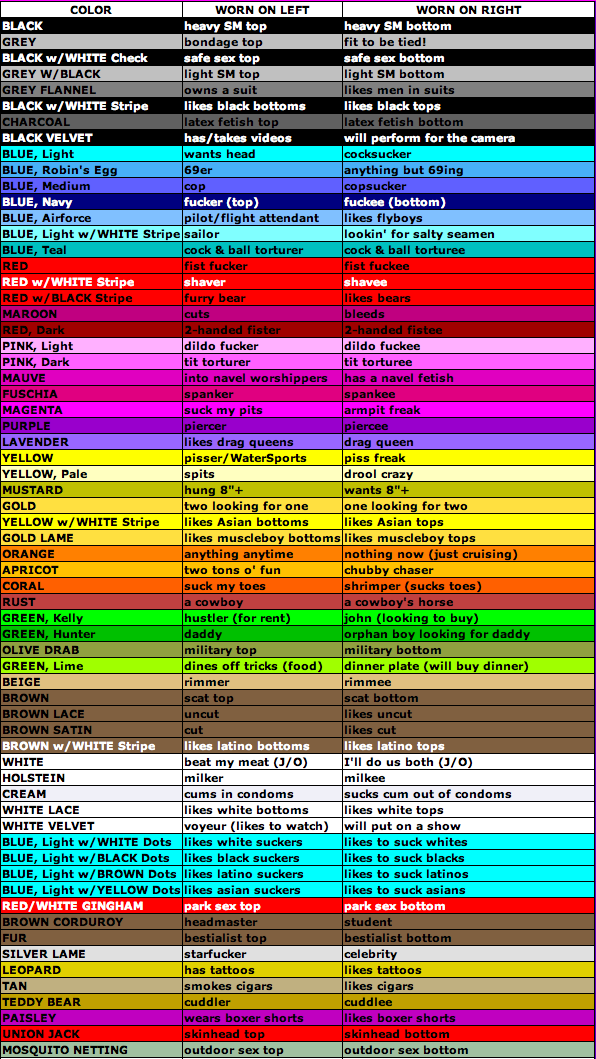Some may think that the gay community’s obsession with finding out the sexual proclivities of a potential partner is a trend of today. But questions like “into” and “looking for” have been around a lot longer than the dating apps we use today to ask them.
Here, we take a look at the tools gay men have historically used to determine who is into what.
The Hanky Code
The handkerchief code (also known as the hanky code, the bandana code and flagging) is the wearing of various colored bandanas around the neck was common in the mid- and late-nineteenth century among cowboys, steam railroad engineers and miners in the Western United States. Color-coded, this system has been historically used by gay men to indicate preferred sexual fetishes, what kind of sex they are seeking, and whether they are a top or bottom.
It is thought that the wearing of bandanas by men originated in San Francisco after the Gold Rush, when, because of a shortage of women, men dancing with each other in square dances developed a code wherein the man wearing the blue bandana took the male part in the square dance, and the man wearing the red bandana took the female part.
Gay rights demonstration at the DNC, New York City, 1976. (Credit: Warren K. Leffler)
Claims to when the more modern hanky code started vary. Some say it started in New York City in late 1970 or early 1971 when a journalist (not Michael Musto) for the Village Voice joked that instead of simply wearing keys to indicate whether someone was a "top" or a "bottom", it would be more efficient to subtly announce their particular sexual focus by wearing different colored hankies.
Others say that it was around 1971 by the San Francisco department store for erotic merchandise, The Trading Post. In Gay Semiotics, Hal Fischer writes:
In San Francisco, the signs began appearing around 1971. The Trading Post, a department store specializing in erotic merchandise, began promoting handkerchiefs in the store and printing cards with their meanings. The red and blue handkerchiefs and their significance were already in existence, and meanings were assigned to other colors as well.
Alan Selby, founder of Mr. S Leather in San Francisco, claimed that he created the first hanky code with his business partners at Leather 'n' Things in 1972, when their bandana supplier inadvertently doubled their order and the expanded code would help them sell the extra colors they had received.
Bob Damron’s Address Book
Bob Damron’s Address Book (1980)
Starting in 1964, a businessman by the name of Bob Damron published a book of all the gay bars he knew from his constant travels across the United States. “This book fit comfortably in the palm of your hand,” a description reads. “Despite its petite size, this book was an impressive accomplishment. Each one of the listings he had visited himself. Every last copy of the book he sold himself.”
The guides, called Bob Damron’s Address Book, featured various bars, bathhouses and “cruisy areas” in cities from all 50 states. Also listed in the guides was the handkerchief code.
In The Saint Foundation archives, we have the 1980 edition of Bob Damron’s Address Book, which explained the “color codes” from that year.
Color Codes from Bob Damron’s Address Book (1980)
Today, the handkerchief code is still used, and there are a lot more colors of the rainbow expressing different desires, kinks and fetishes. Take a look here:
What color are you wearing?





